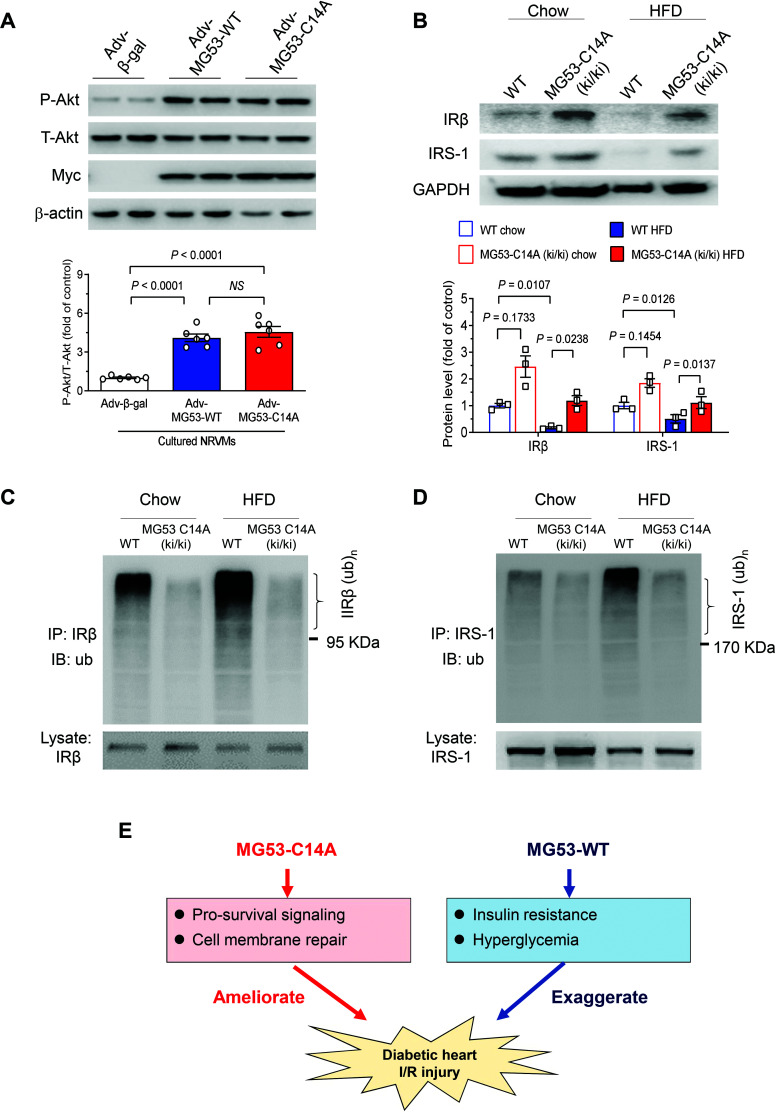Figure 8.
The mechanisms of the cardioprotection and antidiabetic effects of MG53-C14A mutant. A: Representative Western blots and statistical analysis of total (T-Akt) and phosphorylated Akt (P-Akt) in cultured rat neonatal cardiomyocytes with adenovirus-mediated overexpression of MG53-WT or MG53-C14A (n = 6). Myc served as a marker for adenovirus transfection, and β-actin served as a loading control. B: Representative Western blots and statistical analysis of IRβ and IRS1 in the skeletal muscle from WT and MG53-C14A (ki/ki) mice receiving chow diet or HFD at 38 weeks of age (n = 3). C and D: Ubiquitination levels of IRβ (C) and IRS1 (D) in the skeletal muscle from WT and MG53-C14A (ki/ki) mice receiving chow diet or HFD at 38 weeks of age (n = 4). E: Schematic diagram showing the role of MG53-WT and MG53-C14A in cardiac I/R injury in diabetic hearts. In diabetic hearts, MG53-WT leads to insulin resistance and hyperglycemia, which not only compromises the efficacy of MG53-mediated cardioprotection, but also exaggerates cardiac I/R injury. In contrast, MG53-C14A effectively ameliorates I/R-induced myocardial injury without eliciting metabolic adverse effects. Data are presented as mean ± SEM. Statistical analysis was conducted by one-way ANOVA with Tukey multiple comparisons test (A) or two-way ANOVA with Tukey multiple comparisons test (B). IB, immunoblotting; IP, immunoprecipitation; NS, not significant.

